
PM 2.5
Laboratory Operations
 |
PM 2.5 Laboratory Operations |
| National PEP Weighing Laboratory US-EPA, Region 4 Science and Ecosystem Support Division Athens, Georgia |
|
Introduction |
|
|
The PM2.5 Monitoring Program is divided into a laboratory component and a field sampling component, followed by data validation, analysis, and reporting. The laboratory component includes filter handling, inspection, equilibration, and weighing; data entry, validation, management and distribution to client Regions; as well as filter archival and data submittal to the Air Quality System (AQS). Since data from the State and Local Air Monitoring Stations and National Air Monitoring Stations (SLAMS/NAMS) networks are used for National Ambient Air Quality Standards (NAAQS) comparisons, data quality assessment is essential to make NAAQS determinations within an acceptable level of confidence. To meet data quality requirements for this program the Federal Reference Method Performance Evaluation Program (FRM PEP) was developed and implemented by EPA. The FRM PEP is used to evaluate measurement system bias of the PM2.5 monitoring network. The strategy is to collocate and operate portable Federal Reference Method PM2.5 air sampling instruments within 1 to 4 meters of the routine SLAMS/NAMS PM2.5 air monitoring instruments and compare the results. The PM2.5 Weighing Lab is designed for determining changes in filter mass and is where unexposed filters are received, inspected, conditioned, preweighed, loaded into cassettes, and shipped to the client Regions for sampling. After sampling, the filters are returned to the Weighing Lab, inspected, conditioned and post-weighed, the data are analyzed, and PM2.5 concentrations are calculated for comparison with data collected at the collocated SLAMS/NAMS site. The National Performance Evaluation Weighing Lab is located in Athens, GA in Region 4 and serves all ten EPA Regional programs. The filters used for the PM2.5 sampler are comparatively small, each weighing approximately 150 milligrams. Because of the size and weight of the particles that are collected on these filters, net weights are measures in micrograms. Loadings on the filter can range from 2 to 2000 micrograms with most filter loadings around 300 micrograms. To put this weight in perspective, consider that a 4 centimeter long human hair weighs about 312 micrograms. This 300 microgram weight represents 0.2 percent of the weight of a blank filter. In addition, it is expected that the laboratory analyst will duplicate weighings of the same filter to within 15 micrograms. With the operational constraints of the microbalances, the introduction of water vapor on the filters, and the measurement of small particles and filter loadings, the Weighing Lab is designed to perform under strict operational criteria. A mean relative humidity between 30 and 40 percent and a mean temperature between 20 and 23 degrees centigrade must be maintained during the 24-hour period prior to a weighing session. Also, the Weighing Lab must be maintained as close as possible to "clean room" conditions to minimize contamination, air flow interferences and electrostatic charges. A weighing session includes the inspection, sorting, conditioning of filter lots and batches, pre- and post-weighing of filters, and information retention and management. Before weighing, each filter must be equilibrated to the controlled environment of the Weighing Lab. This is extremely important in that the filters are expected to off-gas during this period and stabilize in weight. Very sensitive microbalances which have a resolution of 1 microgram are used to measure filter mass. The National PM2.5 PEP Weighing Laboratory is equipped to weigh filters manually or using an automated system. Manual weighing requires the analyst to physically manipulate and weigh each filter to determine its mass. Automated weighing requires the use of an autohandler to weigh up to 50 filters in a session without the involvement of the analyst. In addition, all quality assurance checks are completed automatically, and the data is then transferred to weighing lab database. Batches of filters which have been preweighed are placed into cassettes and distributed to regional field scientists for sampling. After sampling (filter exposure), the filters/cassettes are packaged and shipped back to the National PM2.5 Weighing Lab in coolers at a temperature of 4 degrees Celsius or less. Exposed filters are removed from the cassettes and equilibrated to the weighing lab conditions and post-weighed. The difference between pre- and post-weight is calculated, and the concentration in milligrams per meter cubed, using sampler run (air flow) data, is determined. All pertinent laboratory and field data are stored and retained in a dedicated computer database. Following post-weight, the filters are archived at 4 degrees centigrade for one year, and at room temperature for 2 additional years. Periodically, and during the first year, post-weighed filters are retrieved from archival and reweighed to determine stability. The above description is a summary of the FRM PEP process. If you would like more information regarding PM2.5 filter weighing criteria and methodology, please consult 40 CFR Part 50, Appendix L, Quality Assurance Document 2.12 or Quality Assurance Guidance Document, Method Compendium, PM2.5 Mass Weighing Laboratory Standard Operating Procedures for the Performance Evaluation Program. These documents can be found on the EPA, national webpages. |
Photographs
Note: each of the following photo images link to a larger version of the photograph Filter Weighing Session  Filter Conditioning Station  Manual Weighing Station 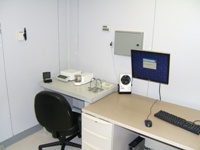 Autohandler 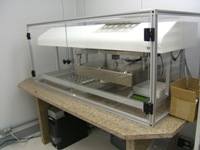 Environmental Controller and Weighing Lab Entry 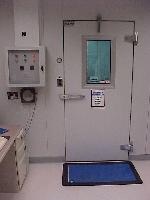 Filter Packaging, Shipping and Receiving 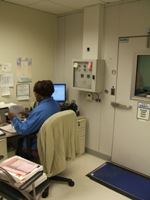 Filter Inspection Area 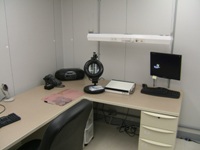 Filter Inspection and Petri Slide Loading 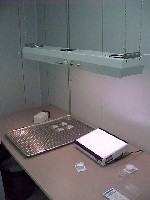 Preparation for Filter Archiving  Filter Equilibration in Petri Slide 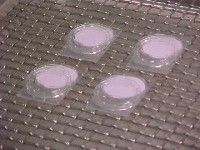 |
![[logo] US EPA](../gif/logo_epaseal.gif)